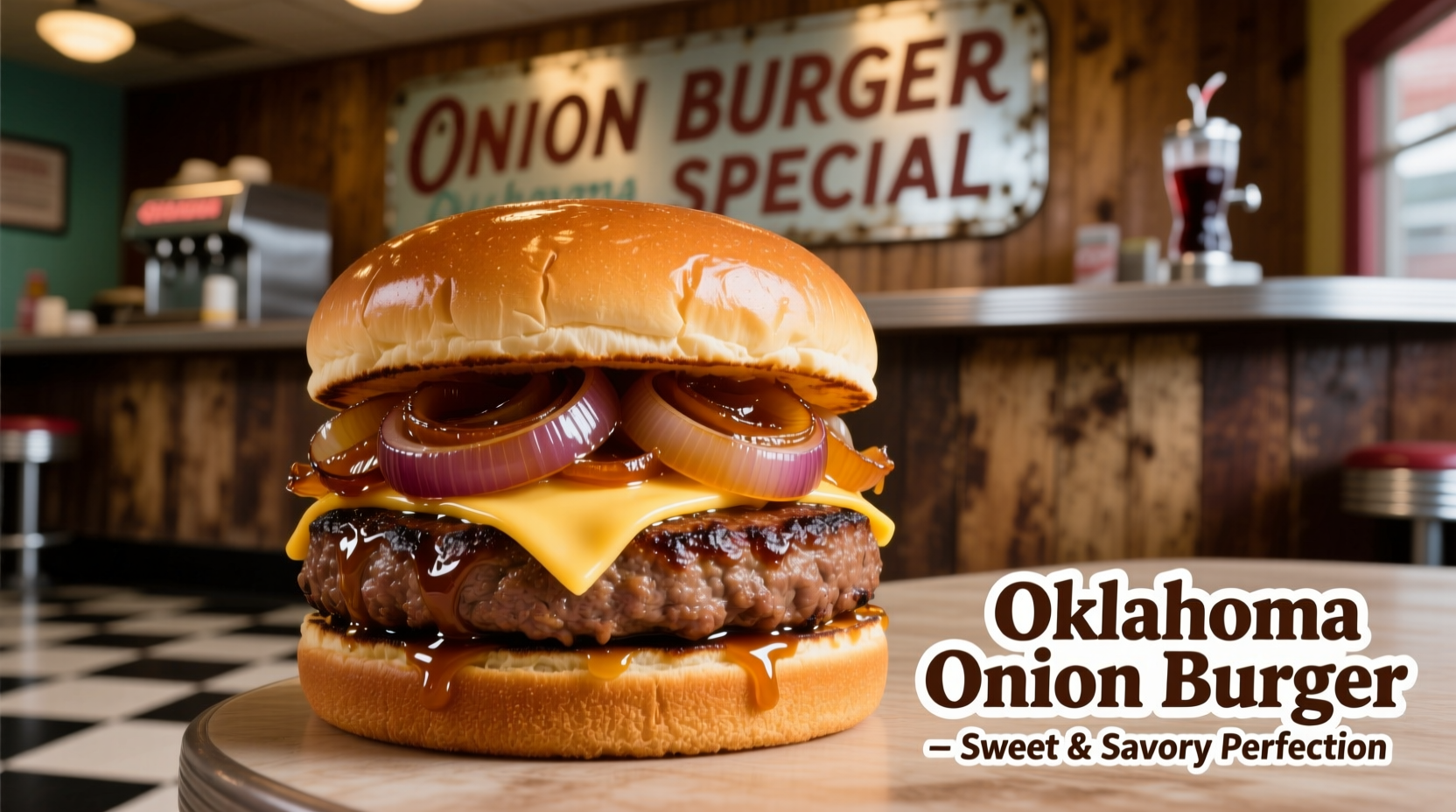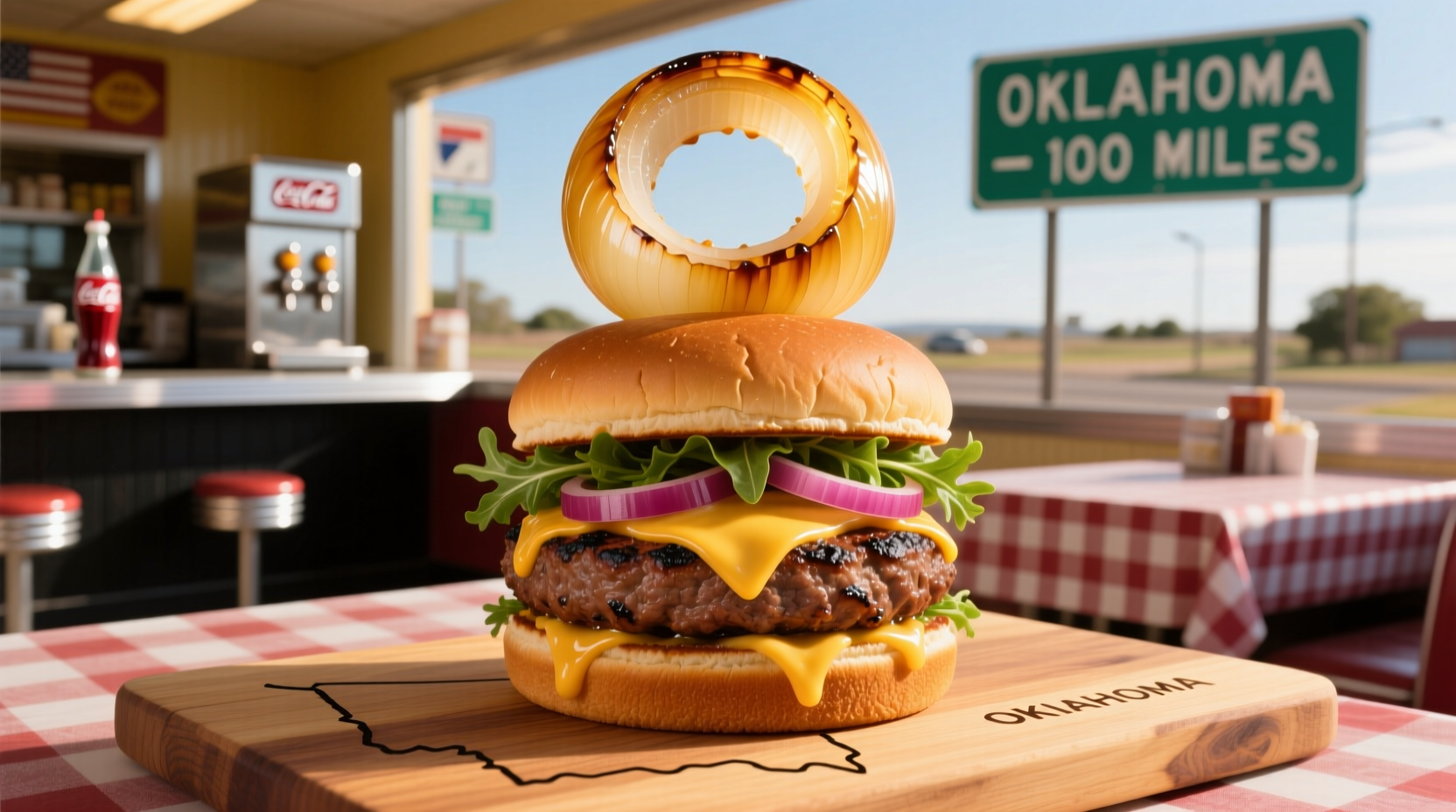The Origins of Oklahoma's Signature Burger
While burgers exist nationwide, Oklahoma's version has deep historical roots. The onion burger emerged during the 1920s oil boom when meat was expensive but onions grew abundantly in Oklahoma's soil. Restaurant owners like Fred Overton of Hamburger Inn in El Reno pioneered the technique of mixing chopped onions directly into thin beef patties—a cost-saving measure that unexpectedly created a culinary sensation.
| Time Period | Key Development | Cultural Impact |
|---|---|---|
| 1920s | First onion burgers served at Hamburger Inn in El Reno | Provided affordable protein during oil boom |
| 1930s-40s | Spread to roadside diners across Oklahoma | Became staple of Route 66 dining culture |
| 1950s-60s | Standardized preparation methods developed | Featured in Oklahoma tourism promotions |
| 2014 | El Reno designated "Onion Burger Capital of the World" | National recognition through food media |
What Makes an Oklahoma Onion Burger Unique
Unlike standard burgers elsewhere, Oklahoma's version follows specific preparation techniques documented by the Oklahoma Historical Society. The defining characteristics include:
- Thin patty construction—typically 1/4 inch thick to maximize surface area for onion incorporation
- Onions cooked directly into the meat—finely chopped onions are pressed into the patty during grilling
- Distinct caramelization process—slow cooking creates sweet, jam-like onions without burning
- Simple toppings—typically just mustard, pickles, and sometimes a slice of cheese

Where to Experience Authentic Oklahoma Onion Burgers
While you'll find onion burgers across the state, certain establishments have perfected the craft. Based on Smithsonian Magazine's documentation of regional American foods, these locations represent the tradition authentically:
El Reno's Historic Establishments
El Reno, officially recognized as the onion burger's birthplace, remains the epicenter of this culinary tradition. The original Hamburger Inn (now Johnny's Grill) continues serving the same recipe developed in 1926. Oklahoma City's Sid's Diner, operating since 1950, maintains traditional preparation methods that food historians consider representative of mid-century Oklahoma diner culture.
Modern Interpretations
Contemporary chefs have elevated the classic while respecting its roots. In Tulsa, The Mayor's Grill serves a version that maintains the thin patty and abundant onions but uses locally sourced beef. Oklahoma City's Vast restaurant offers a gourmet interpretation featuring Wagyu beef and heirloom onions, demonstrating how the dish has evolved while preserving its essential character.
How to Make an Authentic Oklahoma-Style Onion Burger
Recreating this regional specialty at home requires attention to specific techniques. Oklahoma State University's Cooperative Extension Service has documented traditional preparation methods that home cooks can follow:
- Use 80/20 ground beef for optimal fat content (critical for proper caramelization)
- Chill patties before cooking to maintain thin structure
- Press 1/4 cup finely chopped yellow onions directly into each 4-ounce patty
- Cook on a flat-top griddle at medium heat (350°F) for 3-4 minutes per side
- Flip only once to allow proper onion caramelization
- Serve on a soft bun with mustard and dill pickles
Cultural Significance and Regional Identity
The onion burger represents more than just food—it's a symbol of Oklahoma's resourcefulness and cultural identity. During economic downturns, the burger's affordability made it a staple for working-class families. The Oklahoma Tourism Department recognizes it as one of the state's signature dishes on their official food trail.
Unlike regional specialties that have disappeared, Oklahoma's onion burger has maintained consistent preparation methods for nearly a century. Food anthropologists note that this consistency reflects Oklahoma's strong diner culture and resistance to culinary homogenization that has affected other regional American foods.











 浙公网安备
33010002000092号
浙公网安备
33010002000092号 浙B2-20120091-4
浙B2-20120091-4